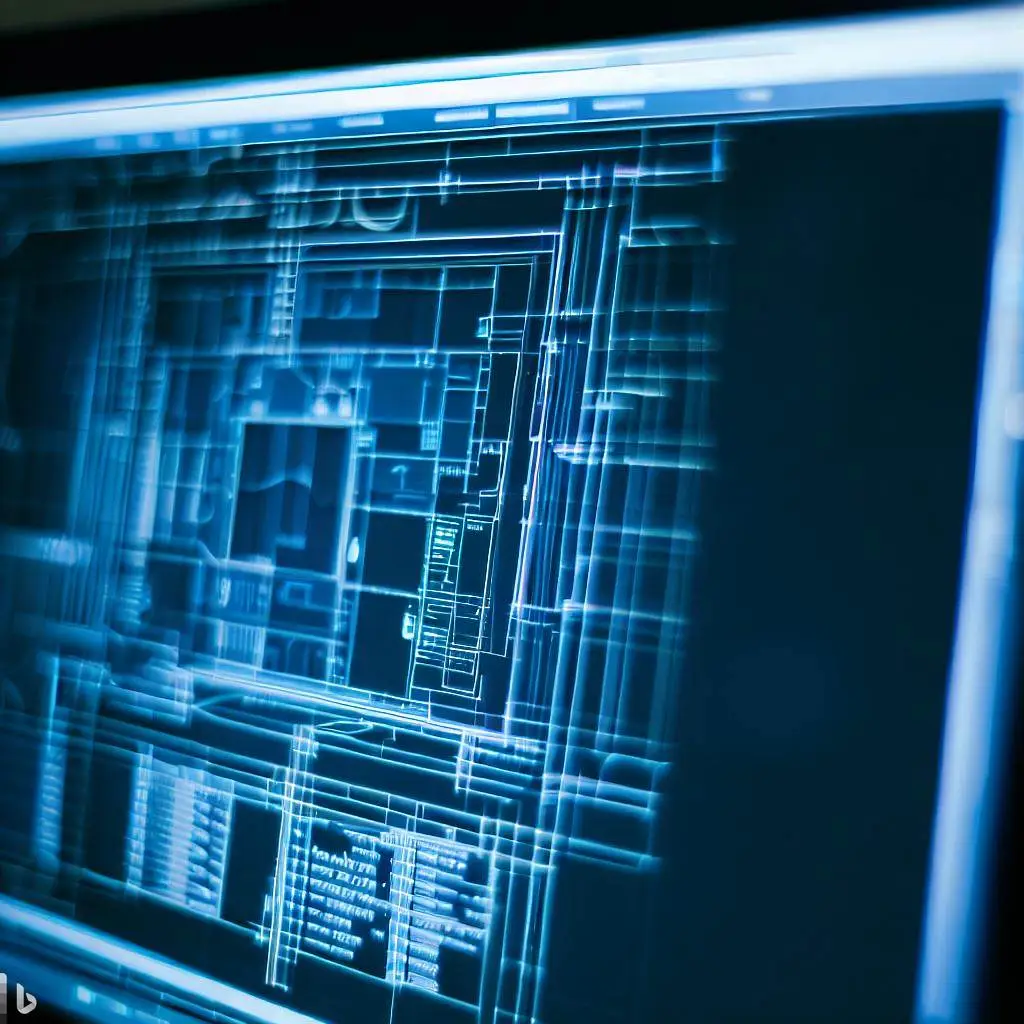Rhino: Revolutionizing Architectural Design and Visualization
May 26, 2023

Harry Johnson
United States
Architecture
Harry Johnson is an expert architect with over 9vyears of experience in using Rhino for architectural design and visualization. he has successfully created intricate architectural forms, visualized designs accurately, and effectively communicated design ideas.
Do you require help in assignments related to architectural design and visualization in Rhino? Our team of experts is here to assist you. We can provide guidance, tips, and support to improve your design process, optimize workflows, and create stunning architectural presentations based on our extensive knowledge and experience with Rhino. Upload your assignment today for professional help with architecture assignments.
- Effective visualization and communication of design ideas are critical in the field of architecture for bringing projects to life. Architects rely heavily on powerful software applications to create accurate designs and communicate their visions to clients, stakeholders, and construction teams. Rhino, also known as Rhinoceros 3D, is one such software that has emerged as a versatile and widely-used tool in architectural design and visualization.
- Rhino, created by Robert McNeel & Associates, has grown in popularity in the architectural industry due to its comprehensive set of tools and capabilities. Rhino has become a favorite among architects worldwide due to its user-friendly interface, powerful modeling features, and versatility in handling complex architectural forms.
- Rhino's support for NURBS (Non-Uniform Rational B-Splines) modeling is a standout feature. This technique enables architects to create smooth, organic shapes with precise geometry, giving them the freedom to experiment with different design options. The software's versatility in dealing with complex architectural forms, parametric design, and the integration of various design elements contributes to its popularity among architects.

- Rhino is essential at several stages of architectural design. Architects use Rhino's sketching and modeling tools to quickly develop initial design concepts during the conceptual design phase. The software's 3D modeling capabilities allow architects to experiment with various architectural forms and conduct massing studies, assisting in the visualization and refinement of design concepts. Rhino's visualization tools also enable architects to visually present their concepts to clients and stakeholders, fostering better understanding and engagement with the proposed designs.
- Rhino facilitates the detailed development of architectural projects as the design progresses. Architects can fine-tune design details with pinpoint accuracy, ensuring accuracy and quality in 3D models. The drafting and annotation features in Rhino enable architects to efficiently generate architectural drawings and documentation, streamlining the design documentation process. Furthermore, Rhino's compatibility with other software applications improves collaboration among professionals working on the same project, allowing for seamless model and data integration and exchange.
- Another useful feature for architects is Rhino's compatibility with analysis and simulation plugins. Architects can evaluate the environmental and structural aspects of their designs by integrating energy analysis and structural analysis tools within Rhino. This integration enables architects to make informed design decisions, optimize performance, and develop long-term architectural solutions.
- Rhino provides robust rendering and visualization tools in addition to modeling and analysis. Architects can produce high-quality renderings of their designs, ranging from simple renders to photorealistic images. Architects can use Rhino's rendering capabilities to showcase materials, lighting, and textures, presenting their designs in a realistic and visually appealing manner. Architects can also use the software's animation tools to create dynamic presentations and walkthroughs of their projects, which improves spatial understanding and design communication.
- Rhino continues to evolve and embrace emerging technologies in order to meet the ever-changing needs of the architectural industry. Rhino's development roadmap is regularly updated and advanced, introducing new features, performance improvements, and workflow enhancements. Architects can expect exciting possibilities in areas such as real-time rendering, augmented reality (AR), AI-assisted design, and generative design, which will push the boundaries of architectural exploration and creativity even further.
Rhino Understanding:
Rhino is a 3D modeling software developed by Robert McNeel & Associates that has gained popularity in the architectural industry. Rhino's comprehensive suite of tools and capabilities enables architects to precisely create intricate and complex architectural forms. Its user-friendly interface and powerful modeling capabilities make it a popular choice among architects worldwide.
NURBS (Non-Uniform Rational B-Splines) modeling is one of Rhino's standout features. This technique enables architects to create smooth, organic shapes with precise geometry, allowing them to experiment with various design possibilities. Furthermore, Rhino's versatility and flexibility make it well-suited for dealing with complex architectural forms, parametric design, and the integration of various design elements.
Rhinoceros in Architectural Design:
Idea Generation:
Rhino is essential in the early stages of architectural design. Architects can quickly develop initial design concepts by using Rhino's sketching and modeling tools. The 3D modeling capabilities of the software enable architects to experiment with various architectural forms and conduct massing studies, assisting in the visualization and refinement of design concepts. Architects can also use Rhino's visualization tools to visually present their concepts to clients and stakeholders.
Design and documentation in detail:
Rhino facilitates the detailed development of architectural projects as the design progresses. Architects can use Rhino's powerful set of tools to fine-tune design details, ensuring accuracy and precision in 3D models. The software also includes drafting and annotation tools, allowing architects to quickly create architectural drawings and documentation. Rhino's compatibility with other software applications improves collaboration among professionals working on the same project by streamlining model and data exchange.
Simulation and analysis:
The compatibility of Rhino with analysis and simulation plugins is useful in assessing the performance of architectural designs. Architects can use Rhino to assess the environmental and structural aspects of their projects by integrating energy analysis and structural analysis tools. Because of this integration, architects can make informed design decisions and iterate on their designs, resulting in optimized and sustainable architectural solutions.
Rhino for Visualization :
Rendering and Illustration:
Rhino includes rendering tools that enable architects to create high-quality visualizations of their designs. Rhino offers a variety of rendering options, from simple renders to photorealistic images. Architects can use materials, lighting, and textures to realistically present their designs. Furthermore, Rhino's compatibility with third-party rendering plugins improves rendering quality and provides advanced rendering features, allowing for the creation of stunning visual representations.
Virtual Reality and Animation:
Rhino provides animation tools that enable architects to create dynamic presentations and walkthroughs of their projects to enhance design presentations. Architects can use these animation features to highlight their buildings' spatial qualities and design intentions. Furthermore, Rhino's integration with virtual reality (VR) technologies enables architects to create immersive experiences in which clients and stakeholders can virtually explore architectural spaces prior to construction, promoting better understanding and engagement with the design.
The Future of Architecture and Rhino:
Innovations and progress:
Rhino's capabilities continue to evolve and improve in order to meet the ever-changing needs of the architectural industry. Rhino's development roadmap is regularly updated and advanced, introducing new features, performance improvements, and workflow enhancements. Architects can expect advancements in areas such as real-time rendering, augmented reality (AR), AI-assisted design, and generative design, which will broaden the possibilities for architectural exploration and creativity.
Success Stories and Case Studies:
Numerous architectural projects have demonstrated Rhino's importance in design and visualization. These case studies showcase the software's use in complex and iconic architectural projects, demonstrating how Rhino enables architects to realize their design visions. Testimonials from architects who have integrated Rhino into their workflows provide insightful information about the software's impact on their design processes, collaboration, and client interactions.
Rhino Resources and Community:
Rhino's popularity is boosted further by its active user community and extensive resources. Architects can participate in the Rhino community by participating in forums, workshops, and conferences to exchange ideas, seek advice, and learn from industry experts. Furthermore, Rhino provides a vast library of tutorials, documentation, and online resources to assist architects in mastering the software and staying up to date on the latest features and techniques.
Conclusion:
- Rhino, also known as Rhinoceros 3D, has changed the way architects design and visualize their work. Rhino has become a popular choice among architects worldwide due to its comprehensive set of tools, user-friendly interface, and powerful capabilities. Its importance in the architectural industry stems from its ability to help with conceptual design, detailed design and documentation, analysis and simulation, and rendering and visualization.
- Rhino's sketching and modeling tools enable architects to quickly develop initial design concepts in the realm of conceptual design. The software's 3D modeling capabilities allow architects to experiment with various architectural forms and conduct massing studies, assisting in the visualization and refinement of design concepts. Rhino's visualization tools improve concept presentation to clients and stakeholders, allowing for better communication and understanding.
- Rhino facilitates the detailed development of architectural projects as the design progresses. Architects can fine-tune design details with pinpoint accuracy, ensuring the accuracy of 3D models. The drafting and annotation features of the software allow architects to efficiently generate architectural drawings and documentation. Rhino's compatibility with other software applications improves professional collaboration by streamlining the exchange of models and data.
- Furthermore, Rhino's compatibility with analysis and simulation plugins is critical for assessing the performance of architectural designs. Architects can assess the environmental and structural aspects of their projects by integrating energy analysis and structural analysis tools. This integration enables informed design decisions and iterative improvements that result in optimized and sustainable architectural solutions.
- Rhino excels at rendering and visualization, providing architects with a variety of tools for producing high-quality visual representations of their designs. Rhino's rendering capabilities enable architects to showcase materials, lighting, and textures with realism, from basic renders to photorealistic images. The software's animation tools and integration with virtual reality (VR) technologies enhance design presentations even further, allowing clients and stakeholders to virtually explore architectural spaces.
- Looking ahead, Rhino continues to innovate and advance its capabilities in order to meet the changing needs of the architectural industry. Regular updates and enhancements bring new features and improvements, promising exciting possibilities for real-time rendering, augmented reality (AR), AI-assisted design, and generative design.
- Finally, Rhino has transformed architectural design and visualization by enabling architects to create intricate forms, accurately visualize designs, and effectively communicate their ideas. Its NURBS modeling, versatility, compatibility with analysis and visualization tools, active community, and extensive resources make it a must-have tool for architects. Rhino will undoubtedly shape the future of architectural design as it evolves, pushing the boundaries of creativity, sustainability, and innovation.